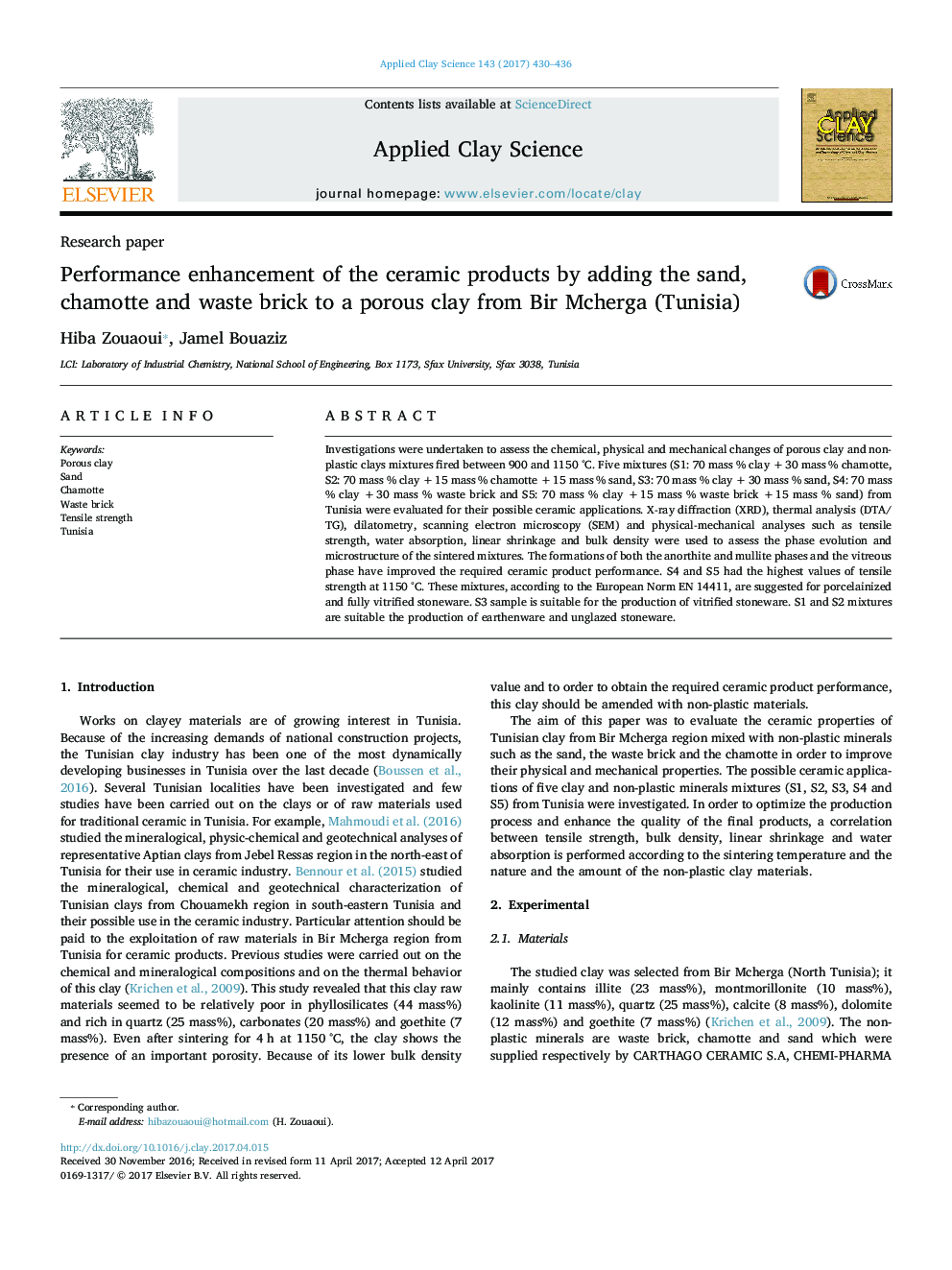| Article ID | Journal | Published Year | Pages | File Type |
|---|---|---|---|---|
| 5468940 | Applied Clay Science | 2017 | 7 Pages |
Abstract
Investigations were undertaken to assess the chemical, physical and mechanical changes of porous clay and non-plastic clays mixtures fired between 900 and 1150 °C. Five mixtures (S1: 70 mass % clay + 30 mass % chamotte, S2: 70 mass % clay + 15 mass % chamotte + 15 mass % sand, S3: 70 mass % clay + 30 mass % sand, S4: 70 mass % clay + 30 mass % waste brick and S5: 70 mass % clay + 15 mass % waste brick + 15 mass % sand) from Tunisia were evaluated for their possible ceramic applications. X-ray diffraction (XRD), thermal analysis (DTA/TG), dilatometry, scanning electron microscopy (SEM) and physical-mechanical analyses such as tensile strength, water absorption, linear shrinkage and bulk density were used to assess the phase evolution and microstructure of the sintered mixtures. The formations of both the anorthite and mullite phases and the vitreous phase have improved the required ceramic product performance. S4 and S5 had the highest values of tensile strength at 1150 °C. These mixtures, according to the European Norm EN 14411, are suggested for porcelainized and fully vitrified stoneware. S3 sample is suitable for the production of vitrified stoneware. S1 and S2 mixtures are suitable the production of earthenware and unglazed stoneware.
Keywords
Related Topics
Physical Sciences and Engineering
Earth and Planetary Sciences
Geochemistry and Petrology
Authors
Hiba Zouaoui, Jamel Bouaziz,
